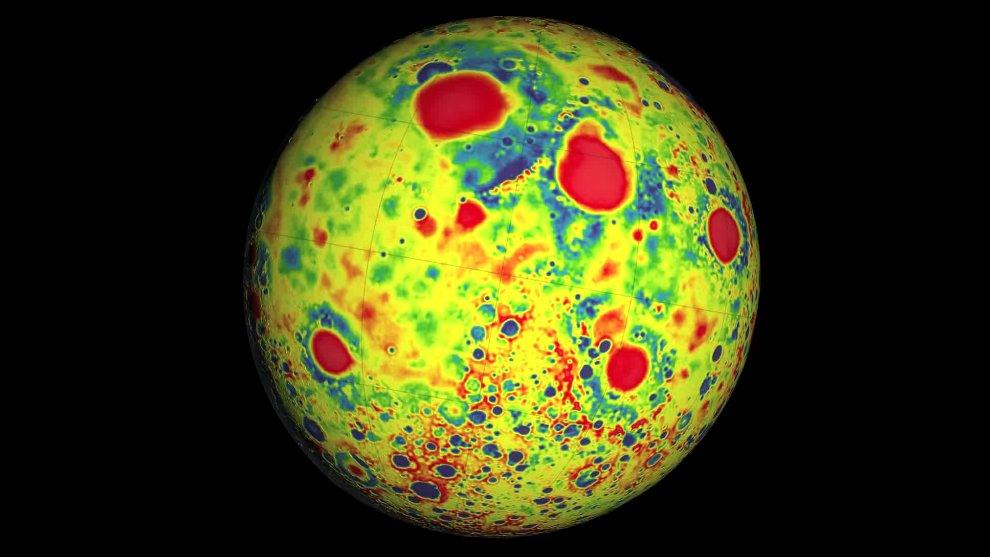New lunar crater named after aviation pioneer Earhart
- Published
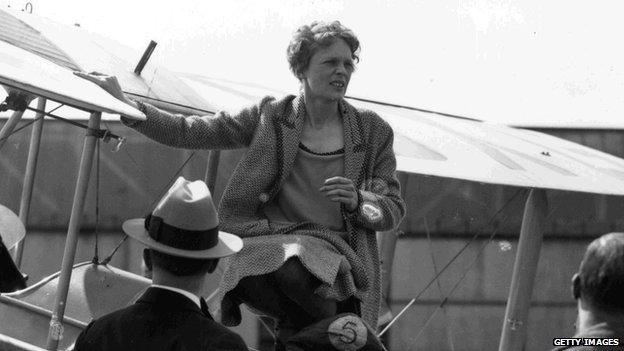
Amelia Earhart set a number of flying records before her disappearance in 1937
Scientists have discovered a large crater on the Earth-facing side of the Moon - the first detection of its kind in at least a century.
The previously unknown structure has been named after aviation pioneer Amelia Earhart - the first woman to fly solo across the Atlantic.
The 200km-wide buried crater was found in data from Nasa's Grail spacecraft, which mapped the Moon's gravity field.
The results were presented at a major scientific meeting in Texas.
The discovery was the outcome of work by Rohan Sood, Loic Chappaz and Prof H Jay Melosh at Purdue University, external, where Earhart was a member of the academic faculty from 1935 until her death in 1937.
"I would guess this is probably the first discovery of a crater this big on the nearside of the Moon in a century - maybe two," Prof Melosh told BBC News.
The find was made while the scientists were searching the data for evidence of hollow underground structures known as lava tubes.
"The crater probably pre-dates the big Serenitatis basin, which is just south of it. The Serenitatis ejecta covered it up, probably destroying the southern part of the crater rim and greatly modifying it," Prof Melosh said.
Speaking at the 46th Lunar and Planetary Science Conference (LPSC) in The Woodlands, external, he added: "No-one to our knowledge has ever recognised this as the broken rim of a crater, and we wouldn't have either except that gravity shows it up very clearly as a big circular anomaly [in the Grail data]."
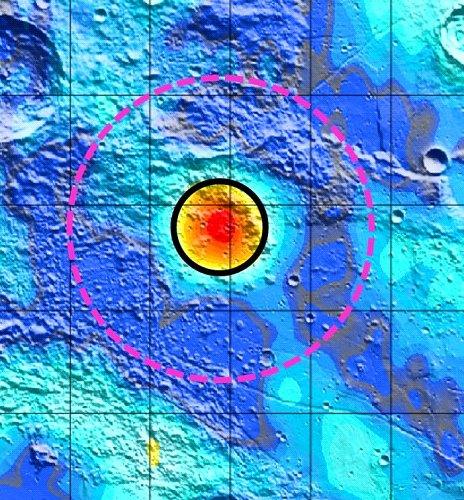
The crater had been heavily altered by a later impact, rendering it unrecognisable
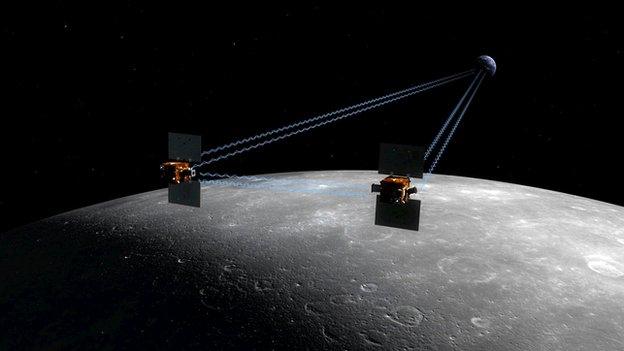
The Grail mission used two small spacecraft to map the Moon's gravitational field
The Serenitatis Basin is thought to have been created by a giant impact about 3.9 billion years ago. So Earhart, which lies partially buried under the debris, must be at least that age, but how much older is not known at this stage.
Grail measured variations in the acceleration of gravity, which can provide a window into the Moon's internal structure.
"Some of those variations are due to topography. So if there's a mountain there, there's an extra acceleration of gravity," explained Prof Melosh.
The researchers used a mathematical correction that takes away the part that is due to the topography of the lunar surface, in order to show what was underneath.
Further mathematical modelling carried out by Loic Chappaz revealed that the signature picked up near the Serenitatis Basin could be best explained by a crater 200km in diameter.
"We have such good data we can probe deep under the surface," said Rohan Sood.
"Based on what we've found, there could be a dozen more craters, but their signatures have been removed by mare impacts, or ejecta from bigger craters."
Prof Melosh added: "[Earhart crater] has been sitting within sight all these years - you can see it with a small telescope or a pair of binoculars. But no one recognised it because they didn't have the extra piece of information - the gravity field."
.jpg)
The huge crater had been hiding in plain sight for years
The team members chose Amelia Earhart because of her association with Purdue and her contribution as a female aviation pioneer. Earhart became the first woman to complete a solo transatlantic flight in 1932, piloting a single-engined plane from Newfoundland to County Derry in Northern Ireland.
She set many other records during her lifetime. But Earhart disappeared in 1937 during an attempt to circumnavigate the globe in a Lockheed Model 10 Electra aircraft.
"When she was lost, she was actually flying a Purdue plane, so we wanted to recognise her in some form," said Rohan Sood.
The name is technically temporary, since the naming of astronomical objects and features needs to be approved by the International Astronomical Union (IAU). But the team is hopeful that the name will stick.
Rohan Sood has found another crater anomaly in the Grail data about the same size as Earhart, but it lacks any surface trace. It has been named Ashoka by the team, but this one may not be adopted.
"I don't think the IAU is going to let us give names to craters that are only sub-surface anomalies, that don't have any surface expression. They will probably remain anomalies," said Prof Melosh.
The LPSC runs from the 16 to the 20 March in The Woodlands, near Houston.
Follow Paul on Twitter, external.
- Published1 October 2014
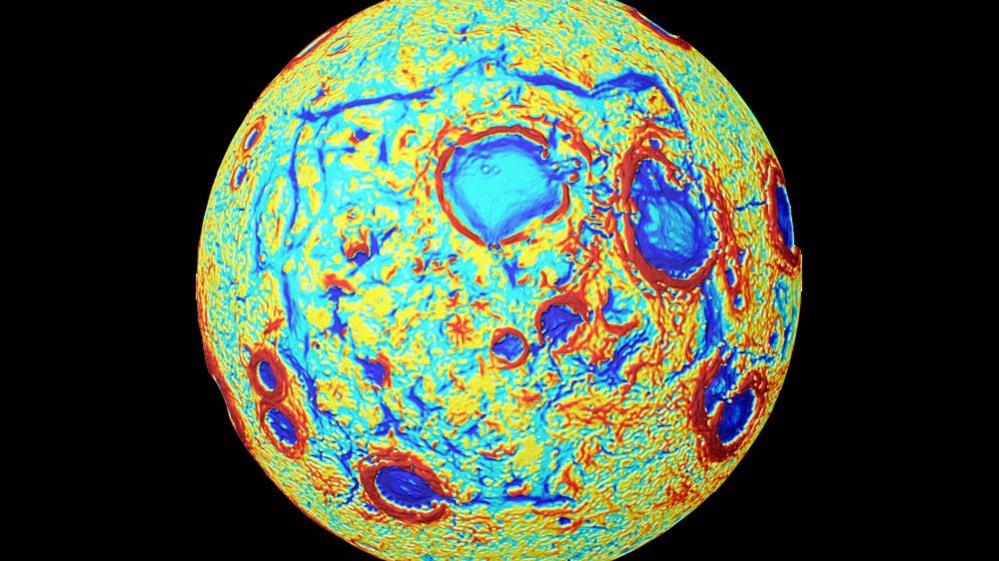
- Published17 December 2012
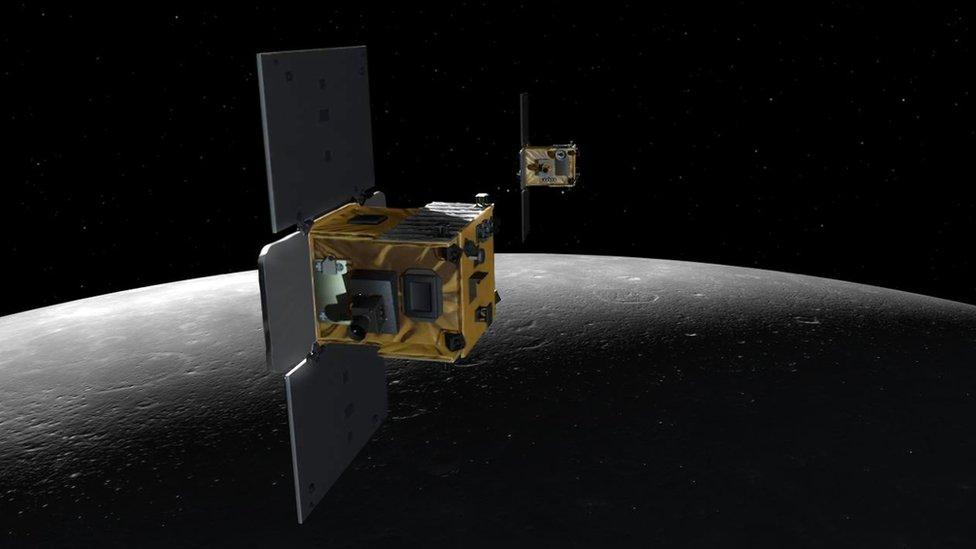
- Published5 December 2012
